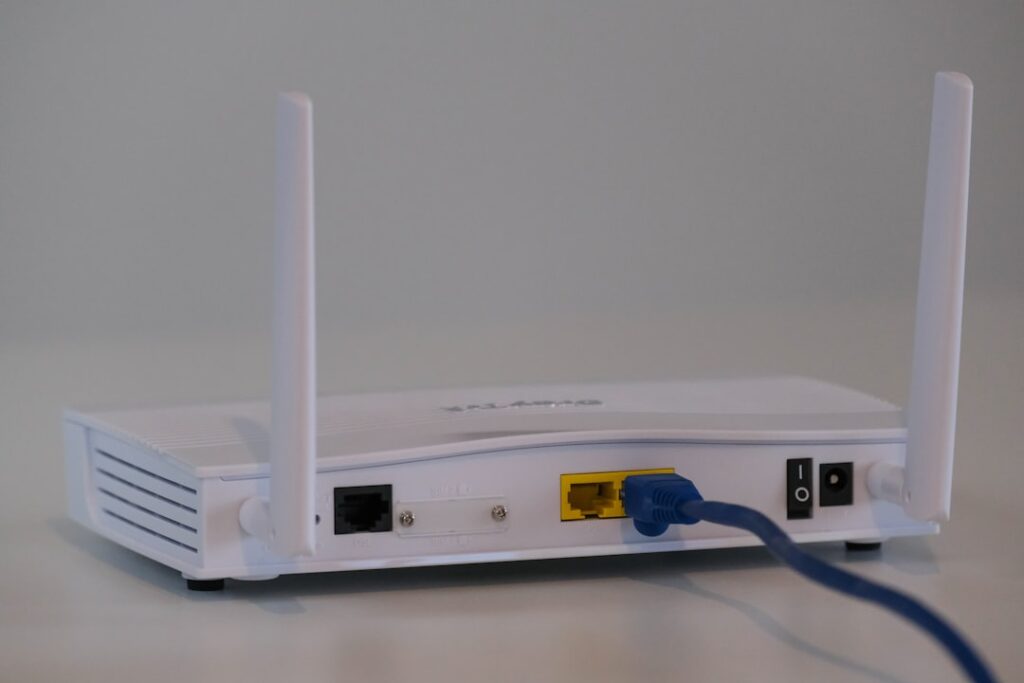You wouldn’t leave your front door unlocked overnight, so why leave your digital life wide open?
Most families have a plan for emergencies like fires or natural disasters, but very few have a family cybersecurity plan. Yet, digital threats can affect your family just as deeply as physical ones—from identity theft to cyberbullying and predators. In today’s connected world, your kids likely use tablets before they can write, and smart devices dot your home. It’s time to take cybersecurity just as seriously.
At Bison Security Co., we believe strong digital protection begins at home. Let’s walk through how to create a family cybersecurity plan that actually fits your lifestyle, protects your loved ones, and brings peace of mind.

Table of Contents
- 1 Building Your Family Cybersecurity Plan
- 1.1 Step 1: Define What You Need to Protect
- 1.2 Step 2: Set Ground Rules and Expectations
- 1.3 Step 3: Implement Strong Security Basics
- 1.4 Step 4: Talk About Online Behavior and Safety
- 1.5 Step 5: Use Parental Controls Thoughtfully
- 1.6 Step 6: Monitor and Adjust the Plan Over Time
- 1.7 Step 7: Prepare for Emergencies
- 2 Conclusion: Cybersecurity Is a Family Value
Building Your Family Cybersecurity Plan
Step 1: Define What You Need to Protect
Start with a family meeting to kick off your family cybersecurity plan. Gather everyone—kids included—and ask: What devices do we all use? Who accesses the internet and how? Make a list of your digital footprint, including:
- Devices: Laptops, tablets, smartphones, smart TVs, game consoles, etc.
- Accounts: Social media, email, streaming services, banking, school portals, etc.
- Data: Photos, schoolwork, personal information, medical and financial records, etc.
You can’t protect what you haven’t identified. Understanding your digital footprint is step one of building your family cybersecurity plan.
Pro Tip: Host a monthly family cybersecurity check-in. Use this time to review your family cybersecurity plan. It opens the door for questions, helps spot new devices or risks, and keeps everyone—especially kids—in the habit of thinking proactively about online safety. Making cybersecurity a family value is one of the strongest defenses you can build.

Step 2: Set Ground Rules and Expectations
Technology brings amazing opportunities—but without guidance, it can also invite risk. That’s why setting clear, age-appropriate ground rules is essential to your family cybersecurity plan.
These expectations should reflect your family’s values, routines, and each child’s maturity level. It’s not just about control—it’s about building healthy habits and safe digital behavior from a young age.
Sample family tech rules:
- No devices in bedrooms overnight
- Promotes better sleep and prevents late-night browsing or messaging.
- Screen-free zones or times
- Example: No devices at the dinner table or during family time.
- Only download apps with parent approval
- Kids must ask before downloading new apps or games.
- Respect others’ privacy
- Always ask before posting or sharing photos/videos of someone else.
- Use secure passwords and never share them
- No password sharing—even with friends. Use strong, unique passwords.
- No chatting with strangers online
- Applies to gaming platforms, social media, or messaging apps.
- Report anything that feels “off”
- Encourage kids to come to you if something online makes them uncomfortable.

Make It a Family Effort
Post your tech rules in a shared space like the fridge or family bulletin board. Better yet, involve your kids in creating them. Ask questions like:
- What helps you feel safe online?
- What should happen if someone breaks a rule?
- How can we support each other?
When kids help shape the family cybersecurity plan, they feel ownership of their digital responsibility and they are more likely to follow, understand, and respect the plan.
Pro Tip: Revisit the family cybersecurity plan together as your children grow or when new tech enters your home. Keep the conversation open and judgment-free—it’s about guidance, not punishment.

Step 3: Implement Strong Security Basics
A strong family cybersecurity plan starts with simple basics that many households overlook—these small steps build powerful, lasting protection.
Passwords
Weak or reused passwords are one of the easiest ways hackers break in. Strengthen your family’s defenses with these smart password habits:
- Use Strong, Unique Passwords for Every Account: Each login—whether it’s email, banking, or your child’s school portal—should have its own complex password. Think long phrases with a mix of letters, numbers, and symbols. The longer, the better—let your password manager remember it for you.
- Adopt a Family Password Manager: Remembering dozens of secure passwords is tough. A trusted password manager like Keeper makes it easy to generate, store, and autofill unique passwords across devices. It’s like a digital vault for your logins.
- Enable Two-Factor Authentication (2FA): 2FA adds a second layer of protection, even if your password is stolen. When supported, use app-based MFA with trusted apps like Authy or Google Authenticator for stronger, more secure verification—far more secure than SMS codes.
- Avoid Common Password Pitfalls: Skip birthdays, pet names, or “123456.” Cybercriminals use lists of these weak passwords to brute-force their way into accounts.
- Never Share Passwords via Text or Email: These platforms aren’t secure. Use a shared password manager instead if you must share access within your household.

Device Settings
Your devices are the front lines of your family’s digital life—fortifying them is a key part of any strong family cybersecurity plan.
- Enable Auto-Lock & Biometric Access: Set devices to auto-lock after a short period of inactivity and require a fingerprint, face ID, or strong passcode to unlock. This protects sensitive info in case a device is lost or stolen.
- Keep Software & Apps Updated: Outdated apps and operating systems are goldmines for hackers. Enable automatic updates to patch security flaws before criminals can exploit them.
- Turn Off Unnecessary Location Sharing: Many apps request access to your location—but not all need it. Review app permissions and turn off location tracking unless it’s essential. This helps prevent unwanted tracking and protects family privacy.
- Remove Unused Apps & Permissions: Regularly audit your devices for apps you no longer use and revoke unnecessary permissions that could expose data.
- Enable “Find My Device” Features: Turn on remote tracking and wipe capabilities (like Apple’s Find My or Google’s Find My Device) so you can locate or erase a device if it’s ever misplaced.
- Use Secure Settings Across All Devices: This includes smartwatches, tablets, e-readers, and even game consoles—any connected device is a potential entry point.

Wi-Fi Security
Secure your home network with these essential steps—it’s a cornerstone of any effective family cybersecurity plan.
- Use a strong, unique Wi-Fi password and rename the default SSID (network name).
- Disable weak encryption protocols like WEP—use WPA3 or at least WPA2.
- Set up separate networks: one for family devices, one for guests, and one for smart home/IoT devices.
- Enable automatic firmware updates on your router to patch vulnerabilities quickly.
- Disable risky features like WPS (Wi-Fi Protected Setup) and UPnP (Universal Plug and Play).
- Install content filtering (like our Bison SafeFilter) to block malicious websites and enhance family browsing safety.

Need Help? We’ve Got You Covered
Cybersecurity can feel overwhelming—but you don’t have to make your family cybersecurity plan alone.
Schedule a FREE Home Cybersecurity Audit with Bison Security Co. to get personalized recommendations, fix vulnerabilities, and gain peace of mind.
Or, if you just have questions—reach out. We’re here to help, whether it’s educating your family, setting up content filtering, or addressing any other security or privacy concern.
Together, we’ll build a safer digital home for your whole family.

Step 4: Talk About Online Behavior and Safety
The internet is part of everyday life—but it’s not always a safe place. Teaching your family how to navigate online spaces confidently is just as important as installing security software. This part of the family cybersecurity plan is all about building digital street smarts.
Start with Awareness, Not Fear
Frame these conversations as empowering, not scary. Your goal is to equip your family with the tools to make smart choices online—not to frighten them into silence.
Key Topics to Cover:
- Stranger Danger, Digital Edition
- Explain what to do if someone they don’t know tries to message, follow, or befriend them online. Help them understand it’s okay to say no, block, or report.
- How to Spot a Scam or Fake Account
- Walk through examples of phishing messages, fake giveaways, or suspicious links. Teach them to pause before clicking, and to ask a trusted adult if something feels off.
- Oversharing = Overexposure
- Kids don’t always realize how much information they’re giving away. Discuss the risks of sharing personal info like their school, location, birthdays, or daily routines—especially in public posts.
- Recognizing and Responding to Cyberbullying
- Define what cyberbullying looks like, how it can happen (comments, DMs, group chats), and make sure they know they can come to you or another trusted adult if it happens.
Keep the Conversation Going
Make this an ongoing dialogue, not a one-time talk. Ask open-ended questions like:
- “What apps are your friends using?”
- “Have you ever seen something online that didn’t feel right?”
- “If someone made you uncomfortable online, what would you do?”
Create a Judgment-Free Zone
Let them know they won’t get in trouble for coming to you. The goal is safety, not punishment.
Pro Tip: Consider creating a family safety code word they can use if something online ever makes them feel unsafe or confused.
This kind of open communication builds trust—and that’s your most powerful tool in keeping your family safe online.

Step 5: Use Parental Controls Thoughtfully
Parental controls aren’t about spying or restricting independence—they’re tools that support your family cybersecurity plan. Think of them as training wheels or guardrails: they don’t limit where your family can go, they just help everyone get there safely.
Why Use Parental Controls?
Kids today are digital natives, but that doesn’t mean they have all the skills to navigate every corner of the internet safely. Parental controls help you:
- Set healthy boundaries around screen time
- Filter out inappropriate or harmful content
- Monitor risky online behavior before it becomes a problem
- Encourage responsible digital citizenship
Powerful Tools to Consider for Your Family Cybersecurity Plan:
- Built-in Device Controls:
- Use Apple Screen Time for iPhones and iPads or Google Family Link for Android devices to manage app usage, set downtime, and limit purchases. These tools give you easy, flexible control directly on the devices your kids use every day.
- Router-Level Content Filtering with Bison SafeFilter:
- Protect your entire home network by filtering inappropriate websites and blocking malicious content before it even reaches your devices. Bison SafeFilter works quietly in the background, making your network safer for every family member—no matter what device they’re on.
- Dedicated Monitoring Apps Like Bark parental controls:
- Bark helps you monitor text messages, emails, and social media for signs of cyberbullying, adult content, or risky conversations. It’s a proactive way to spot problems early and have important conversations before things escalate.
- App-Specific Restrictions:
- YouTube Kids offers a curated, age-appropriate video experience. Gaming platforms and chat apps often include built-in moderation and privacy settings—take time to customize these controls together with your kids.

Build Trust Through Transparency
As part of your family cybersecurity plan, you should explain why you’re using these controls. Kids are more likely to respect boundaries when they understand it’s about keeping them safe, not controlling them.
- Have an open discussion about internet risks and why certain sites or apps are restricted.
- Let them know you want to help them build good habits, not spy on their every move.
- Involve older kids in choosing which restrictions make sense for their age and maturity.
Pro Tip: Schedule regular family tech check-ins to review settings, talk about any new apps or sites, and adjust controls as your kids grow. Parental controls are a tool, but ongoing communication is the real key to digital safety and a successful family cybersecurity plan.
With thoughtful use of parental controls—combined with tools like Bark and Bison SafeFilter—you’re creating a safer, smarter, and more confident digital environment for your whole family.

Step 6: Monitor and Adjust the Plan Over Time
Technology changes fast—and your family’s digital habits and needs change too. Your family cybersecurity plan isn’t a one-and-done deal; it’s a living, breathing guide that should evolve with your household.
Why Keep It Fresh?
Think of your family cybersecurity plan like changing the oil in your car or updating the locks on your front door. Regular check-ins help keep everything running smoothly and protect against new risks.
What to Review Regularly:
- Are your devices still secure?
- Check that software, apps, and firmware are up to date. Outdated tech is like leaving the backdoor unlocked.
- Have any new threats appeared?
- New apps, scams, or phishing tactics pop up all the time. Stay informed so you can update your rules and tools.
- How have your kids grown?
- As kids get older, they need more independence—and different kinds of guidance. Adjust rules and controls to match their maturity and digital skills.
- Is everyone still following the family guidelines?
- It’s normal for rules to loosen or slip. Use these check-ins to reinforce what’s working and tweak what’s not.
Make It Routine and Fun
Set a recurring date every month for a “digital check-up” to review your family cybersecurity plan. Treat it like tidying up the house or testing smoke detectors. It’s a small effort that pays off big in safety and peace of mind.
Pro Tip: If you want an expert’s help, don’t hesitate to schedule a FREE home cybersecurity audit with Bison Security Co. We’ll review your setup, update you on the latest threats, and help adjust your family cybersecurity plan as needed.

Step 7: Prepare for Emergencies
Just like practicing a fire drill, your family cybersecurity plan should include steps for handling digital emergencies. Preparing ahead of time helps everyone stay calm and respond quickly if something goes wrong—whether it’s a lost device, a hacked account, or an online safety issue.
What Could Go Wrong?
- A device is lost or stolen:
- Phones, tablets, or laptops can go missing. Knowing how to lock or wipe them remotely can protect your personal info.
- A family member’s account is hacked or impersonated:
- Hackers might try to pretend to be someone in your family to scam others or steal more data.
- Someone experiences online harassment or cyberbullying:
- This can be scary, but having a clear response plan makes it easier to get help and stop the behavior.
- Private data is shared by accident:
- Maybe a photo, password, or sensitive info gets sent or posted unintentionally.
Create Your Family’s Emergency Plan
Sit down together and map out:
- Who to tell first:
- Identify trusted adults, tech support contacts, or Bison Security Co. experts to reach out to.
- What to do immediately:
- Examples include changing passwords, logging out of accounts, contacting banks, or reporting to platform support.
- How to secure accounts and devices:
- Teach family members how to enable device tracking, lock accounts, or freeze credit if needed.
- How to support each other emotionally:
- Remind everyone that cyber emergencies are common and nothing to be ashamed of. Encourage open conversations.
Practice Makes Perfect
Run through these steps occasionally, just like a fire drill. This way, if the unexpected happens, your family will know exactly what to do—reducing stress and protecting your digital lives.

Conclusion: Cybersecurity Is a Family Value
Your family’s safety goes beyond locked doors and alarm systems. In today’s world, protecting your digital life is just as important.
By building a clear, flexible family cybersecurity plan, you empower your family to use technology confidently and responsibly. And remember, you’re not alone.
At Bison Security Co., we help families like yours stay ahead of digital threats. From identity protection to home network hardening, we’re here to be your trusted cybersecurity partner.
Let’s raise digitally secure families—together.
Family Cybersecurity Plan Checklist
- Inventory all family devices and online accounts
- Create family tech rules and post them visibly
- Use strong, unique passwords and 2FA
- Set screen locks and update devices regularly
- Use content filtering and secure your Wi-Fi
- Enable parental controls and discuss online safety
- Practice what to do if something goes wrong
- Review your family cybersecurity plan every month
- Ask Bison Security Co. about our Family Digital Safety Services
Building a strong family cybersecurity plan today means greater peace of mind—and a safer digital future—for everyone you love.

Take Control of Your Digital Safety
At Bison Security Co., we believe strong cybersecurity starts at home—and grows with you. Whether you’re a parent, professional, or small business owner, we’ve got your back with the tools and support you need to stay safe in a connected world.
Here’s How to Get Started:
- Schedule your FREE Home Cybersecurity Audit — 30-minutes, no strings attached.
- Take Our Cyber Hygiene Quiz— Learn where your family or business stands and what to do next.
- Explore Our Cybersecurity Services — From identity protection to digital wellness plans, we make security simple and strong.
- Subscribe for Weekly Tips — Stay ahead of threats with expert advice, family-friendly checklists, and early alerts.
Security That Stands Its Ground.
